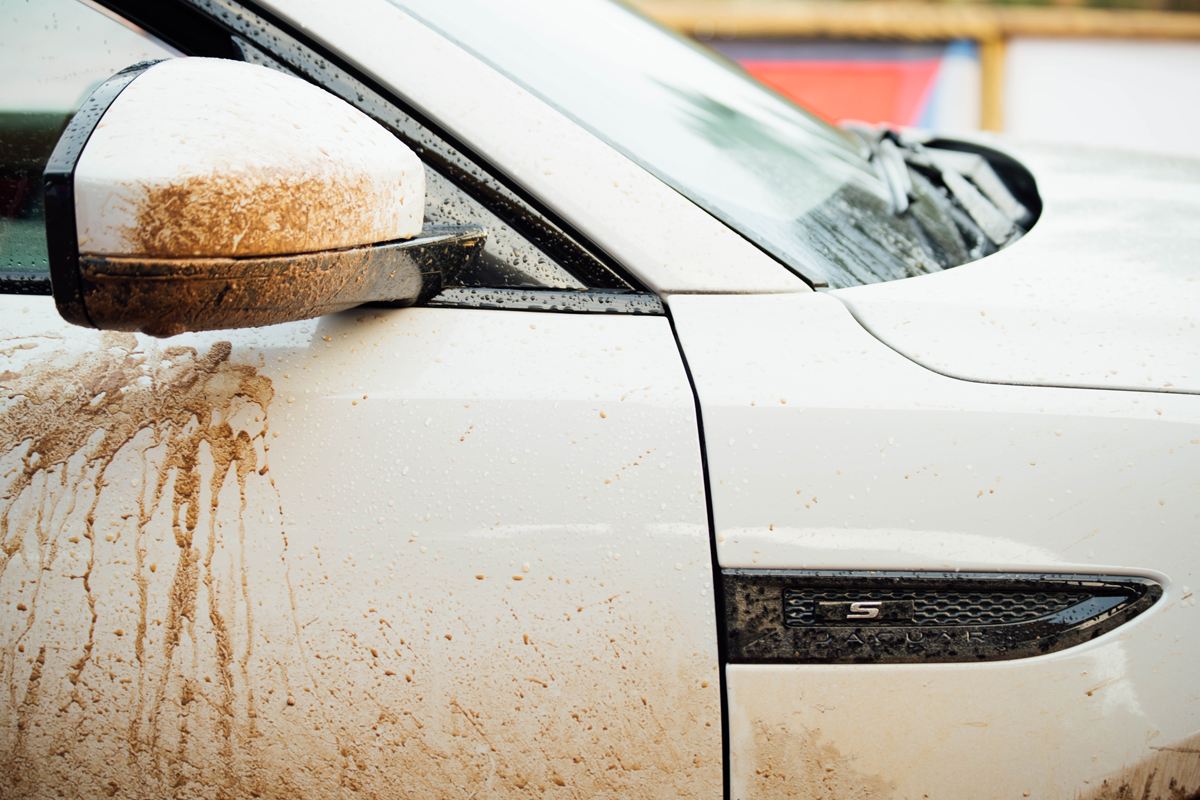Test Drive: 2018 Jaguar E-Pace
We get muddy driving the new compact crossover in Corsica

by Andrew Maness
Corsica, the fourth largest island in the Mediterranean, is mainly known for picturesque bays where visitors anchor their yachts during the summer. As we discovered on a recent trip, it’s also the most mountainous island in the region—and is very quiet during the winter. Winding roads offer breathtaking vistas of the sea as they climb from valley floors to peaks and back down again. The variation in scenery is vast and striking—from mossy forests to high-alpine lakes, tiny mountain villages, rocky fields, and sandy beaches. It’s only after exploring Corsica in Jaguar‘s new 2018 E-Pace that it makes sense the island was chosen as the location to launch the all-new compact crossover. And, like the island, the new E-Pace is full of pleasant surprises and stunning details.

Riding on the same JLR D8 architecture as the Range Rover Evoque and Land Rover Discovery Sport, the E-Pace retains the steel stiffness found in those vehicles and as such it’s a little heavier than one might assume. (Some 4,178 pounds, to be exact.) The beautifully sculpted hood and front fenders are aluminum, as are the roof and inward-angled tailgate, but that’s where the weight savings end. As such the E-Pace is some 150 pounds heavier than its larger sibling the F-Pace. If it wore more aluminum, the E-Pace would offer improved fuel economy, drive sharper and avoid being slightly heavy-set for its segment. Of course steel is cheaper than aluminum and the E-Pace starts at $39,595 as it is, so a lower cost of entry was chosen over further weight reduction. Usually that’s a major problem for any vehicle, but Jaguar got so much right with the E-Pace elsewhere.

There’s no denying that this little crossover is mighty attractive. It looks sharp in photos, and even sharper in real life—the sign of a truly well-designed vehicle. The front fascia borrows heavily from the faultless design of the F-Type; a smart decision that was made after the initial, more F-Pace-inspired design was scrapped. It’s not that the F-Pace is ugly, it’s just unremarkable to look at. The E-Pace will have you studying its angles and looking back at it while walking away.

A wide shoulder over the rear wheel arch and how that line tapers to the rear help it avoid the bulbous look that plagues not only the F-Pace, but most CUVs and SUVs. The E-Pace design team avoided this by pushing the wheels out to the extremes, thus creating extra short front and rear overhangs. While lending to an overall athletic appearance, this also makes the E-Pace a more legitimate off-roader, something few in this segment can claim.

The capability afforded to the E-Pace by sharing a platform with the Evoque and Discovery Sport, plus the trick “Active Driveline” system (included with 296-hp R-Dynamic models) that can send up to 100 percent of engine torque to the rear wheels, help make this compact SUV a qualified candidate for adventures beyond pavement. This was demonstrated to us in a sandpit (turned into a muddy vehicular playground by substantial rainfall) and on trails with variable surfaces that included loose rock and deep ruts. It’s still too stiff a vehicle for real heavy-duty trail use, but the limits are certainly higher than that of its competitors.

In fact, that may well be the best way to sum up the E-Pace: it’s taken the compact SUV segment to a new level. It looks better, drives better, and sounds better than its competitors. Not simply a smaller F-Pace, the E-Pace is something entirely different than what has been the best selling Jaguar to date. It’s not quite as much fun to drive as the Porsche Macan (perhaps the only truly special crossover to date) but it’s nearly there and for a good deal less money too.

The F-Type-inspired interior, complete with driver-oriented cockpit and grab point for front-seat passengers make the sporting aspirations of the E-Place perfectly clear. By no means is it bespoke (the steering wheel is lifted right out of the F-Type) but it does serve as a reminder that Jaguar chose not to phone it in when they could have. The center console is particularly well-organized, anchored by either a standard 10-inch infotainment screen or an optional 12.3-inch unit. The latest version of Jaguar’s InControl Touch Pro is easy to use, and the 825-watt Meridian system impressive.

While we were most interested in getting familiar with how a R-Dynamic P300 model handles spirited driving on winding roads (in both dry and wet conditions), there’s a plethora of new creature comforts also. From the “Share ETA” function that allows the driver to notify contacts of their arrival time via a companion app, to “Arrival Mode” which suggests parking spaces. That kind of connected car tech is the other side of the crossover coin and increasingly the more important one. There’s a USB charging point for every occupant, a 4G WiFi hotspot and an “Activity Key” that allows drivers to leave the fob in the vehicle and simply put on an RFID wristband in its place.

Sporty, capable, connected and attractive, the 2018 E-Pace was a delight to drive around the picturesque French isle, and while it will be a pleasure to drive in the city, it’s a car that also deserves to be taken off the beaten track.
Interior image courtesy of Jaguar, all others by Andrew Maness












